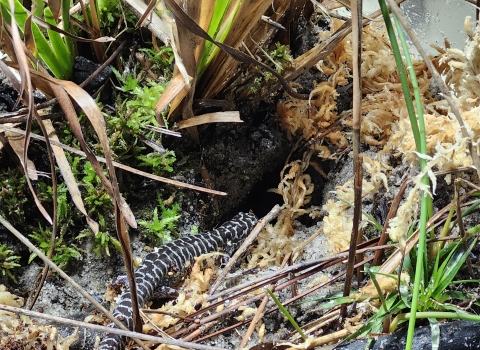JOINT NEWS RELEASE:
ARIZONA GAME AND FISH DEPARTMENT AND U.S. FISH AND WILDLIFE SERVICE
YUMA ? The recently completed 2006 survey of desert bighorn sheep populations in southwestern Arizona estimated the population on the U. S. Fish and Wildlife Service's Kofa National Wildlife Refuge at 390 sheep, indicating the decline in refuge bighorn numbers noted during the 2003 survey is continuing and may be at or near the lowest levels previously recorded. The 2003 survey followed a very severe drought year in 2002 and estimated 620 sheep, down from 812 computed after the 2000 survey.
A decline almost identical to that of 2000-2003 was recorded between 1994 and 1997, when those surveys estimated 811 and 600 sheep, respectively. Then, as in 2003, the 1997 survey followed an especially severe drought year.
Since 1992, the Kofa surveys have been jointly conducted every three years by the U.S. Fish and Wildlife Service (Service) and Arizona Game and Fish Department (AGFD) as part of the department's overall survey of desert bighorn sheep populations throughout southwestern Arizona.
While the 2006 overall population estimate is still being computed, Kofa data through the 2005 survey have reflected the overall downward trend in southwestern Arizona bighorn numbers that began during the 1996 drought year.
The size, location, and unfragmented nature of Kofa's habitat have long been recognized as a nearly unique combination that have made it's 435 square miles of sheep habitat especially productive.
Bighorn from Kofa National Wildlife Refuge have been an important source of animals for the reestablishment and maintenance of bighorn populations across Arizona and throughout the southwestern United States, to include New Mexico, Colorado, and Texas. The last translocation of sheep from Kofa was in 2005 when 30 sheep were captured and transported to the San Andres
National Wildlife Refuge in New Mexico.
While drought is almost certainly the most significant limiting factor for bighorn sheep and other desert species, the continued decline in sheep populations in the face of somewhat improved rainfall conditions since the 2003 survey is disconcerting and is the subject of ongoing study by both the Service and AGFD.
Predation, permanent water availability, disease and public recreational disturbance in lambing areas are among the possible factors contributing to population decline being studied in conjunction with the further analysis of the survey data.
Survey data also will continue to be used to adjust hunting and translocation activities so as to minimize any additive downward pressure on the bighorn population. Sportsmen and sportsmen groups, which provide over 90% of the funding for bighorn management in Arizona, continue their long and active involvement in Service and AGFD projects to improve and protect bighorn habitat and populations.
While data indicates that resident lions historically are rare on Kofa National Wildlife Refuge, recent reports indicate that at least five lions may be using the Refuge for significant periods. Active research into mountain lion predation is ongoing and includes use of waterhole cameras, searches for lion tracks, scats or kills, efforts to radio collar and track lions, and recording of all reported lion sightings. While a normal part of the desert ecosystem, lions can have a significant impact on populations already heavily stressed by drought or disease.
Survey data also will continue to be used to adjust hunting and translocation activities so as to minimize any additive downward pressure on the bighorn population. Sportsmen and sportsmen groups, which provide over 90% of the funding for bighorn management in Arizona, continue their long and active involvement in Service and AGFD projects to improve and protect bighorn habitat and populations.


